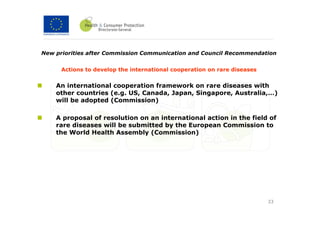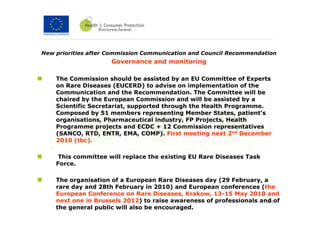The European Union has taken several actions to address rare diseases at the EU level. This includes establishing an Orphan Medicinal Product Regulation to incentivize research and development of treatments for rare diseases. The EU has also adopted the Second EU Health Programme for 2008-2013, which prioritizes rare diseases. More recently, the EU issued a Commission Communication and Council Recommendation on rare diseases calling on member states to develop national plans or strategies for rare diseases by 2013.
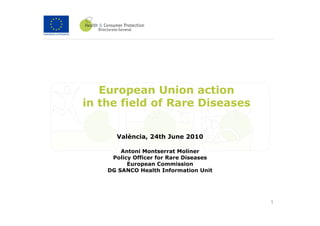
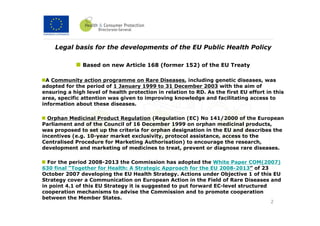





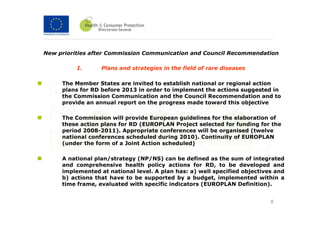













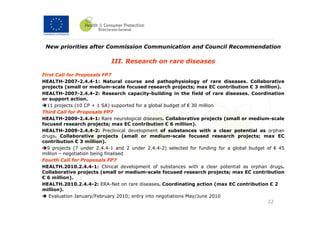

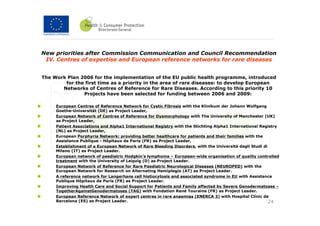

![New priorities after Commission Communication and Council Recommendation
V. Gathering the expertise on rare diseases at European level
The Health Programme and the FP7 will continue to support, in a coordinated way,
registries, databases and biobanks on rare diseases with appropriate financial tools
for a sustainable funding when necessary (proposals, operational grants, better
coordination with FP7).
The Commission will establish publicly accessible platform for Rare Diseases patient
registers, databases and biobanks maybe defining criteria for register accreditation
and qualification and the access to data or samples.
A solid benchmarking could be established with successful EU Public Health
Programme ongoing projects, having World relevance in the area [EUROCAT
(Surveillance of congenital anomalies in Europe), ENERCA (European Network for Rare
Congenital Anaemias, or EAIS (European Autism Information System)] or EU FP6
ongoing projects [EUROWILSON, RBDD (Rare Bleeding Disorders Database) or
EUROSCA for ataxias].
These project outputs should also supports specific international consensus
conferences such as the Consensus Conference on Primary Immunodeficiency, the
European Haemophilia Consortium Conferences, the Haemoglobinopathies Conference,
etc.
To analyse feasibility of the creation of a public-private foundation for RD, the
26
European Research Foundation for Rare Diseases.](https://image.slidesharecdn.com/antonimontserrat-100712070413-phpapp01/85/Antoni-Montserrat-26-320.jpg)






